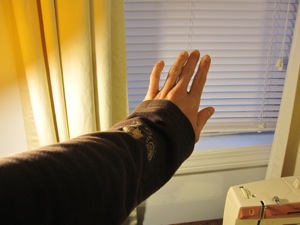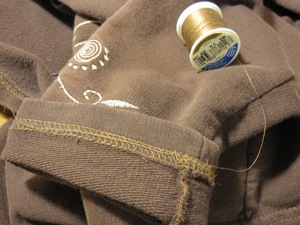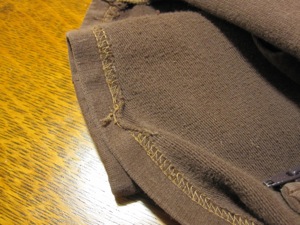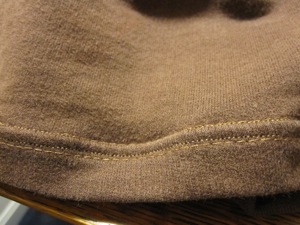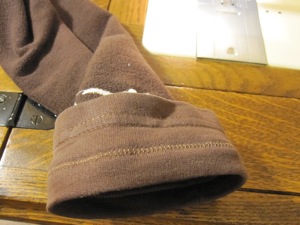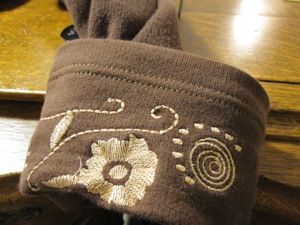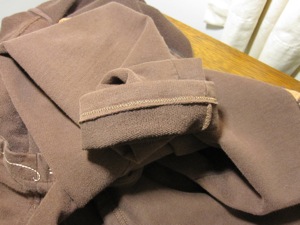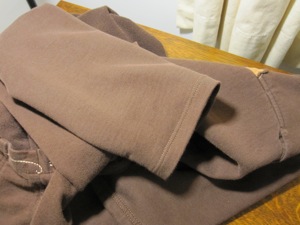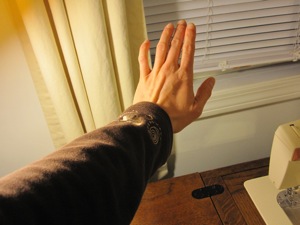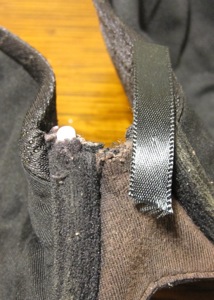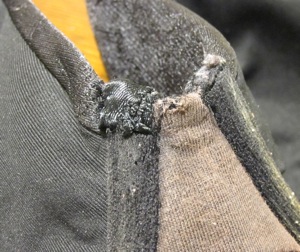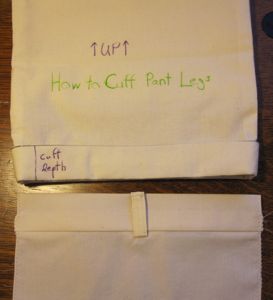Saturday was my second crochetiversary, which makes today my second crochetiversary, observed. So it is only fitting to have a crochet post.
I have been on a quest for a winter hat that fits my big head and doesn’t become completely useless when the wind blows. Last time I used two strands of worsted weight held together, and while my Strawberry Shortcake hat is a favorite now, it’s not what you would call warm.


I made a second hat shortly after the hat above, also with two strands held together, and while it was more snug, it still wasn’t warm. I tried lining it with a second layer of hat, but then it was just floppy and unwieldy – without really being that much warmer, because now it didn’t come down far enough to protect my forehead or ears.
Enter two skeins of Lion brand Jiffy Thick & Quick and my N hook. There aren’t many pure-acrylic bulky yarns that are easy to crochet (the homespun types cause me no end of aggravation putting the hook through them instead of around them), and I can’t have even 20% wool against my forehead without being itchy to distraction. Fortunately, this kind comes in a variegated autumn color scheme I like.
Following the idea of a pattern I saw online, I made it from the bottom up. This made fitting a lot easier, since from the start I had something I could actually put on, rather than resting a pancake on my head and wondering “should I stop increasing now?” For extra density I used back post half double crochet, and for ease of real-time fitting I started with foundation half double crochet. For the latter, I did exactly futuregirl’s method for foundation single crochet, including starting with a ch 2 (ch 3 was too much, oddly), but with a yarn wrap before the first hook insertion. Back post is when the post is to the back of the stitch; it is the one where your hook goes into the back of the fabric, around the post, and back out through the back of the fabric.


I realized I don’t know how to decrease properly in hdc, and instead of looking it up I made it up: make an hdc except for the final yarn over/pull through (3 loops on hook), pull up one loop in the next stitch, yarn over and pull through all four loops on the hook. Similarly for bphdc. I tried it with a yarn over between the two loops pulled up through stitches, which is the accepted method, and it was just too bulky. The way I did it you get a nice little triangular stitch.
I wanted to relax and not pay attention to the pattern, and of course hats are very sensitive to personal size and gauge, but the idea was this:
1. fhdc until you have something that fits around your head, over your ears and nape of neck to forehead. Sl st to join; this is the back of your head.
2. ch 2; hdc around with a dec on each side of the head [foundation stitches are supposed to be true to size, but even when I focus on pulling the link and chain through a good ways, mine are still a little tight]. Sl st to join.
3. This is the first back post round. Ch 1 and bphdc around, with an extra bphdc at the end (in the sl st). Here you start working in a spiral, so no joining.
4-5. bphdc around with 4 increases: two near the start of the round and 2 near the end [this puts them towards the back of your head where more of the size is].
6-7. bphdc around.
8. in this rnd you start decreasing. Put one dec about 1/6 of the way from each end, and otherwise bphdc around.
9. put three dec in the first quarter of the round and three more dec in the last quarter.
10. put 8 dec in, concentrated toward the front.
11. put 7 dec in, evenly spaced.
12. as in 11.
13. back to 8 dec, but evenly spaced. After this rnd I had 23 sts. If your head is smaller you might have fewer.
14. as in 13.
15. dec 7. Stitch around so the top loops show to the outside like in the bphdc and FO.

It is an incredibly warm hat that covers my ears almost completely, without being insufferably thick or floppy. Success!
We took these pictures on the same day as the kappa pictures, and the leaves were gorgeous. So, a little bonus picture of one of the most beautiful fall colorations I’ve ever seen:

Also: happy birthday to my brother Jason!
